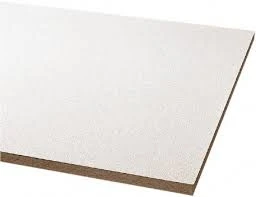10 月 . 19, 2024 03:22 Back to list
install ceiling access panel
How to Install a Ceiling Access Panel
Installing a ceiling access panel is an essential task for both homeowners and contractors. These panels offer easy access to vital areas in the ceiling, such as plumbing, wiring, or HVAC systems, allowing for ease of maintenance and repairs without the need for extensive demolition. If you’re considering installing a ceiling access panel in your home or business, follow these guidelines for a successful installation.
Choosing the Right Panel
Before you begin, select the appropriate access panel for your project. Ceiling access panels come in various materials, including plastic, metal, and fiberglass, with different designs to match your specific needs. Consider factors such as the size of the opening, the location, and the weight of the materials being accessed when choosing your panel. For example, if you are accessing plumbing, you might need a sturdier metal panel.
Tools and Materials Needed
Gather the necessary tools and materials before starting your installation. You will need
- Measuring tape - Pencil or chalk - Drywall saw or utility knife - Level - Screwdriver - Fasteners or adhesive (if applicable) - Safety glasses and gloves
Installation Steps
1. Determine Location Identify where you want to install the access panel. Ensure that it's easily reachable and positioned where it won't obstruct lights or ceiling fixtures.
install ceiling access panel

2. Measure and Mark Use the measuring tape to determine the appropriate size for the access panel. Mark the dimensions on the ceiling with a pencil. It’s advisable to check for obstructions like beams or wires before cutting.
3. Cut the Opening Use a drywall saw or utility knife to cut along the marked lines. Ensure you wear safety glasses and gloves for protection while cutting. Take your time to ensure a clean cut, as this will help your panel fit perfectly.
4. Install the Frame Most access panels come with a frame. Position the frame into the cut opening to check the fit. If it is snug, you can proceed to secure it. Use screws or adhesive as per the manufacturer’s instructions.
5. Attach the Access Panel Place the access panel into the frame. Most panels will have a spring-loaded latch or a screw mechanism for securing them in place. Ensure that the panel sits flush with the ceiling for a professional appearance.
6. Finishing Touches After the panel is installed, you may want to paint or finish the surrounding area to match your ceiling’s design. This step is particularly important if you are using a decorative panel.
Final Checks
Once the access panel is securely in place, double-check to ensure it operates smoothly. Open and close the panel to confirm that there are no obstructions, and that it’s easy to access the area behind the panel.
Conclusion
Installing a ceiling access panel is a manageable task that can save you time and effort in the long run. By following these steps and taking safety precautions, you can create functional access points that will serve you well for years to come. Whether for home improvements or maintenance tasks, an access panel is a smart addition that adds both convenience and value to your property.
-
Revolutionizing Interior Design with Ceilings t grid Suspended SystemNewsOct.29,2024
-
Revolutionizing Ceiling Design with ceiling access panel with Gypsum Tile WaterproofNewsOct.29,2024
-
Revolutionizing Interior Design with PVC Gypsum Ceiling: A Comprehensive GuideNewsOct.29,2024
-
Elevating Interior Design with High quality Mineral Fiber Ceiling TilesNewsOct.29,2024
-
Revolutionizing Interior Design with PVC Gypsum Ceiling: A Comprehensive GuideNewsOct.29,2024
-
Elevating Interior Design with High-Quality Mineral Fiber Ceiling Tiles: A Comprehensive GuideNewsOct.29,2024







